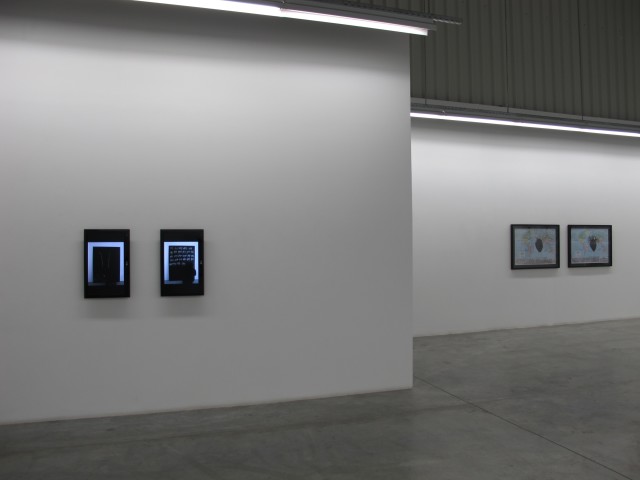Carbon 12 is proud to bring to the UAE a pioneer of Iranian video and performance art. While Ghazel’s work has been exhibited in many prestigious museums and international biennales, “Geopolitics of Roots — No Man’s Land” provides the unique opportunity to witness the evolution of this displaced pioneer’s art. The new series is a significant departure from Ghazel’s existing body of work.
The interest taken by modern and contemporary artists in corrections and transformations of, as well as creative interventions into, existing physical cartography is another insufficiently explored area of the 20th century art. (Surrealist Map of The World/ 1929/ J. Johns, G. Kuitca, J. Durham, A. Boetti, M. Druks, Land art and Fluxus artists, etc.).
They are joined by a number of contributions of imaginary worlds, “outsiders” (Adolf Wölfli); cartographic items of a narrative, fairytale like structure (J.R.R. Tolkien); and finally, the peculiar cartographic solutions of Eskimos and the inhabitants of Polynesian Islands, discovered by cultural anthropology. All that indicates that geographic maps do not function solely to provide easier orientation in space, but have all the elements of a social, economic, political and also – but not less important – aesthetic discourse.
This particularly applies to artists who have been displaced, for one reason or another, from their native countries. The picturesque-ness of global cartography, together with the cartographic division of political or economic power enables artists to integrate an ethical message, very often a strong one, into their aesthetic dialogue with geography. It is precisely due to this and such positions, that artists are entitled to move freely within given cartographic determinants, and to find in global transit, where and how to build their own, even if temporary nest.
When J.L. Borges imagined and suggested a life-size territorial map, entire cartography was elevated to a mental level by his proposition. Namely, it has been shown that analogue and digital maps of the world is a fictitious product of the Western Cartesian rationality and that at the opposite, or rather higher level, exist worlds that are not subject to the known laws of geometry and physics. Still, the visual and semantic potential of geographic maps and atlases are multilayered and significant, and it is upon this potential that artists-cartographers formulate and build their creative dialogue with the world that surrounds them.
Uprooted from her homeland, relocated a long time ago to a new one, Ghazel (1966), in search of an identity, has placed herself into the wide field of creative ‘interstice’. She may belong to the huge community of ‘others’, but she has saved for herself the freedom of a nomad, a wanderer through space and time, finding strong holds equally in tradition, as in her contemporariness. The map of the world occasionally serves her as a fan, to cool down the intensity of her artistic ‘in-between’ position, but also as a background for her personal confession. When she returned to drawing, at the beginning of 2009, rather than allowing the drawing its authentic autonomy, Ghazel integrated it in the global poetics of metaphorical space. Into that space, by a very accurate choice of the domineering symbol in her cartography, she brought the memory of a nomad with roots somewhere on the South Pole and a ramified crown on the Northern hemisphere. Everywhere and also nowhere, Ghazel – a ‘hybrid Iranian nomad’- as she is carefully reconsidering her position from Paris. Wrapped in a black chador in her performances, Ghazel persistently paints her own destiny, searching for a solution on how to find the place of her own tranquility, while always being on the move. She is fully aware that this destiny is not only hers, but she shares it with a huge population of contemporary nomads who wander in the world so as to at least on a cartographic projection, take root and ramify the crown of their own identity.
While her early work “Me” (1997- now) often contained certain irony, and the silent film “humor”, her most recent cycle “Geopolitics of Roots ¬— No Man’s Land” is a specific artistic discourse, which looks into, from a position of individual experience, a serious global problem which is often ignored. In case of trouble, the luggage is always ready. As a socially involved artist, Ghazel has taken cartography as an attractive medium through which she transmits her poetic messages. They focus less on the world that had initially, ideally, been analogously drawn, and later digitally projected by technocrats and experts, and more on the reality that, of course, does not correspond to the perfectionist high-tech geographic informational system.
Text by: Želimir KošCevic
Text translated from Croatian by: Karla Vlahovic
Text edited by: Houmaan Assari
